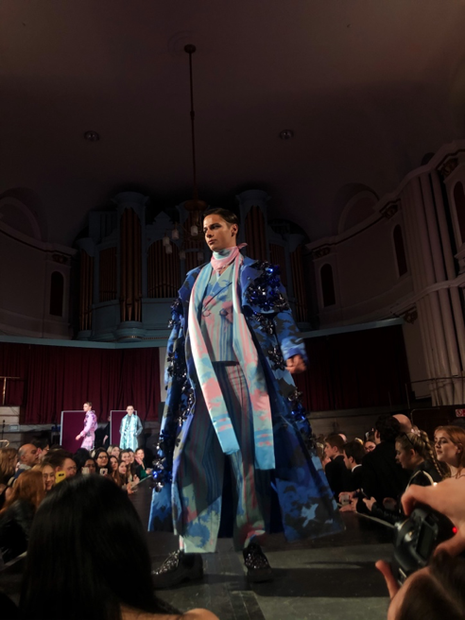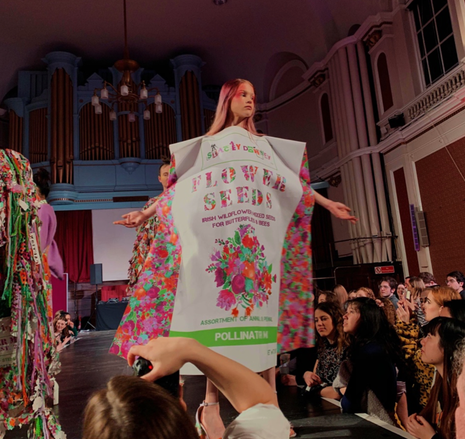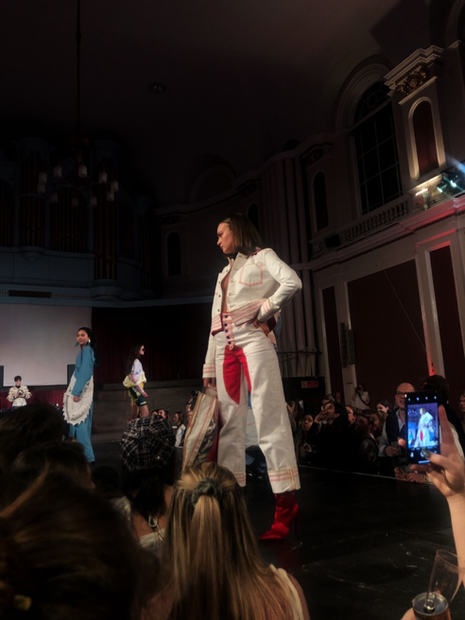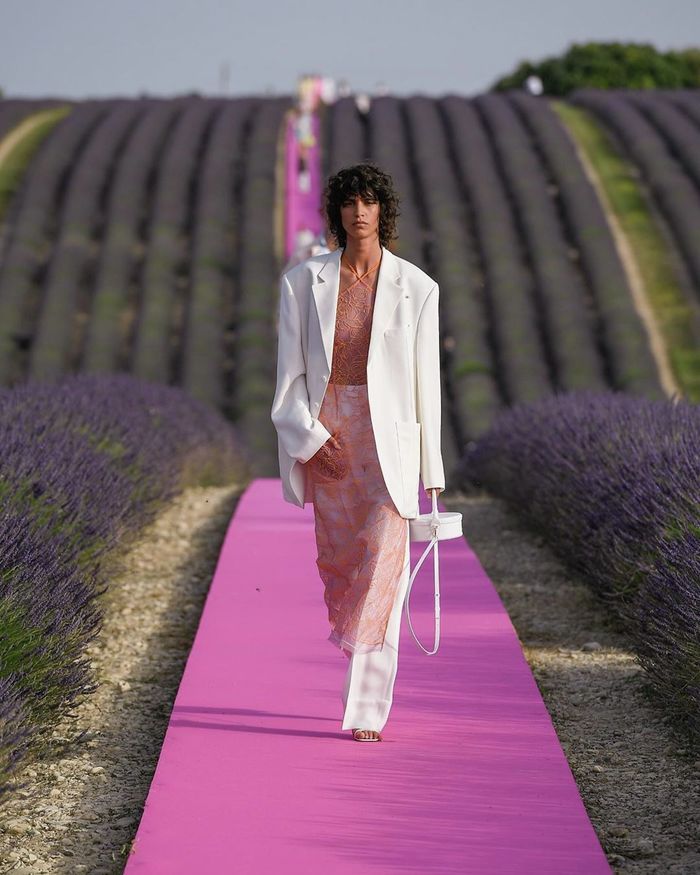CUCFS 2020 Review: Gender in Fashion
Marina McCready walks us through the gendered nuances of this year’s Cambridge University Charity Fashion Show

As I left this year’s Cambridge University Charity Fashion Show, I was overwhelmed by the talent and creativity that was put on display. I was struck by the numerous ways in which gender roles were subverted and challenged in the show, and left feeling as if I were looking at the fashion industry with new eyes.
The first look that struck me was in Congregation’s collection. A white power suit with pink detailing, styled with red boots and, most noticeably, a red circle on the crotch which immediately calls to mind the horror of period stains. I remember from about the age of fifteen, it became an unspoken rule that white trousers or skirts were to be avoided, especially around that time of the month. I remember horror stories about girls whose pads had leaked, or whose periods had started earlier than expected. To see this experience presented on a catwalk brought back all these memories, but this time what had been a deeply mortifying part of puberty, seemed not embarrassing, but empowering. The look was also presented with absolute confidence and power, reminding me that this natural process need not be a source of shame.

Another look that struck out against gendered norms was part of Stacey Downey’s ‘Couture with a Conscience’ collection. The bold floral prints combined with alarming designs inspired by the packaging of seeds and pesticides made for a look both beautiful and arresting. Whilst this collection was a commentary on the destruction of flowers in the cut flower industry, I couldn’t help but see its links to the female experience. While the outfits were pretty, the graphic writing spread across them, with words such as ‘TOXIC’ and ‘CAUTION’ brought the idea of weaponised femininity to mind. Moreover, the loose-fitting cuts of the clothing, with broad and exaggerated silhouettes, suggested a reclamation of the female body that ensures it is not dressed for the male gaze, but for itself. In an age when women are still objectified and the target of abuse across the world, the combination of beauty and danger in this collection felt particularly relevant. Not only are the clothes designed without pandering to the male gaze, but they contain a clear warning of danger; these are clothes for women who are reclaiming their agency and refusing to accept male oppression.

It was not just the clothing worn by female models that helped to subvert gender roles. From Congregation’s sailor-boy look with a sheer shirt to Kat Evan’s pink and blue camouflage, combined with pastel cricket jumpers that looked like they came out of a Wes Anderson movie, it was clear that menswear is breaking away from dark colours and dull cuts, blurring lines between genders and adding a softness that, in a culture of toxic masculinity, is frankly refreshing. Having been let down in the past by mainstream menswear — why are brands so reluctant to put men in pastels? I very much appreciated these younger designers not being afraid to let men look, for want of a better word, pretty. One notable champion of this softer masculinity is Harry Styles, who from his sheer shirts to floral suits has redefined masculinity and demonstrated just how gorgeous male fashion can be.
All in all, this show truly encouraged me to consider my own choices of clothing from a gendered perspective. Do I truly enjoy the classic silhouettes I tend to stick to, or am I being influenced by patriarchal ideals? Do I want to look pleasing or intimidating, or both? What are my motivations for dressing in certain ways? Although I am strongly opposed to the suggestion that wearing certain types of clothing means a woman is ‘asking for it’, this show has inspired me in many different ways to see fashion not as a means to an end, but as an end in itself. I don’t want to wear clothes I think will please people, I want to wear clothes that I enjoy and find interesting. And most of all, I want to wear white trousers free from fear.
 News / SU reluctantly registers controversial women’s soc18 December 2025
News / SU reluctantly registers controversial women’s soc18 December 2025 News / Dons warn PM about Vet School closure16 December 2025
News / Dons warn PM about Vet School closure16 December 2025 Features / Should I stay or should I go? Cambridge students and alumni reflect on how their memories stay with them15 December 2025
Features / Should I stay or should I go? Cambridge students and alumni reflect on how their memories stay with them15 December 2025 News / Cambridge study finds students learn better with notes than AI13 December 2025
News / Cambridge study finds students learn better with notes than AI13 December 2025 Fashion / The art of the formal outfit 18 December 2025
Fashion / The art of the formal outfit 18 December 2025









